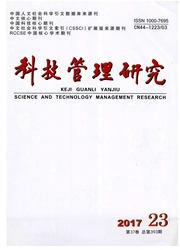

 中文摘要:
中文摘要:
根据京津冀协同发展的战略目标选取指标体系,运用距离协同模型对京津冀1995—2014年的面板数据进行定量分析,反映此间的区域协同发展状况。结果表明,1995—2000年,京津冀发展度缓慢增长,协同度变化较小;2001—2003年,协同度有小幅提升,发展度开始加快增长;2003—2010年,发展度快速增加,协同度快速下降;2010年之后发展度增长有所放缓,协同度稍有提高,京津冀协同发展战略逐渐开始发挥作用。
 英文摘要:
英文摘要:
This paper builds an index system according to the objectives of the synergetic development strategic, then analyzes the panel data of this region from 1995 to 2014, which quantitatively reflects the synergetic development situation of this region. The paper concludes that during the beginning years of 1995 to 2000, the increasing of development degree of this region was relatively tardy, and the synergetic degree fluctuated slightly. From 2001 to 2003, the synergy degree increased slightly and the development degree began to increase in a quicker speed. From 2003 to 2010, the development degree increased rapidly, while the synergetic degree decreased rapidly. After 2010, the growth of development degree slowed down, but the synergy degree increased slightly, indicating that the Beijing- Tianjin-Hebei synergetic development strategy gradually began to play its role. It is vital to promote the development of Hebei in implementing this national strategy.
 同期刊论文项目
同期刊论文项目
 同项目期刊论文
同项目期刊论文
 期刊信息
期刊信息
